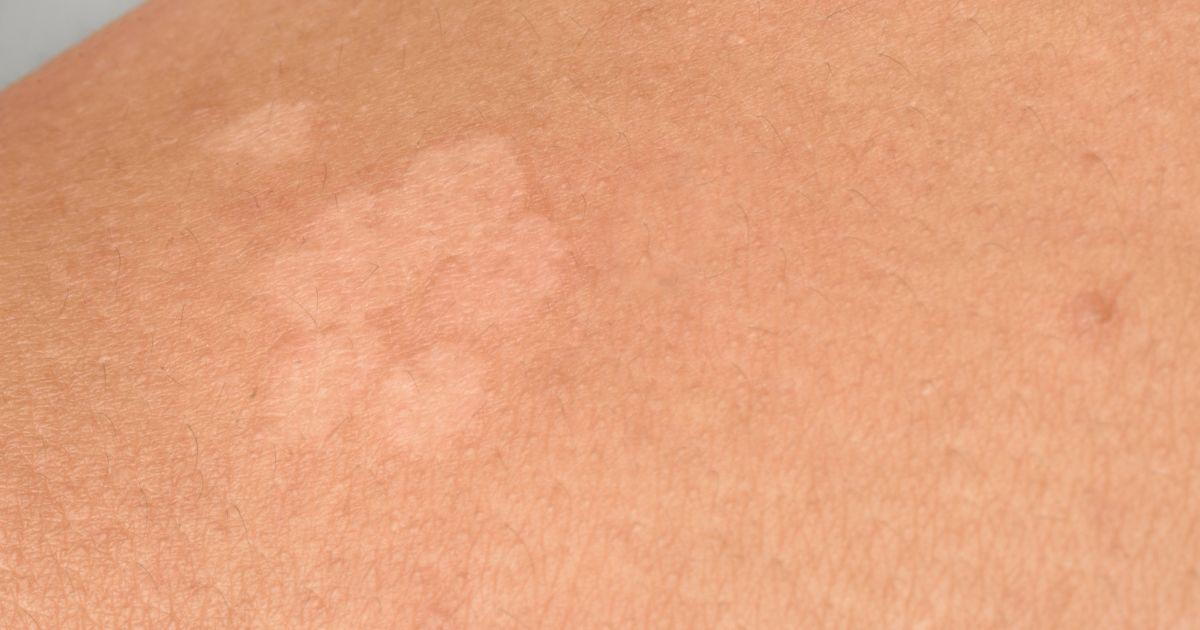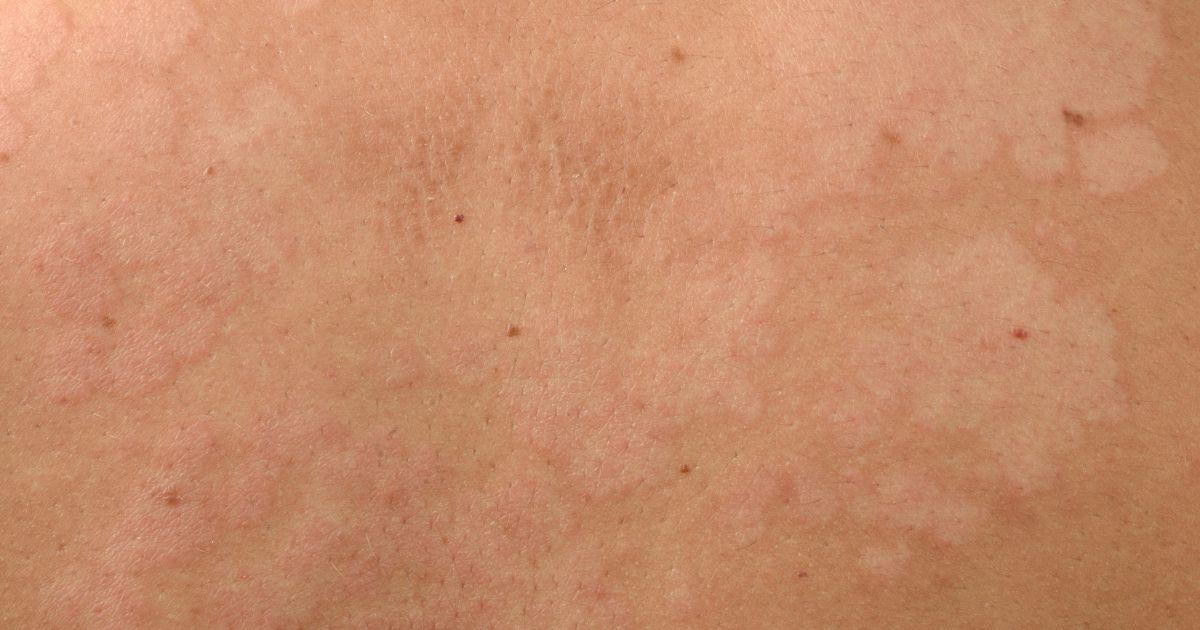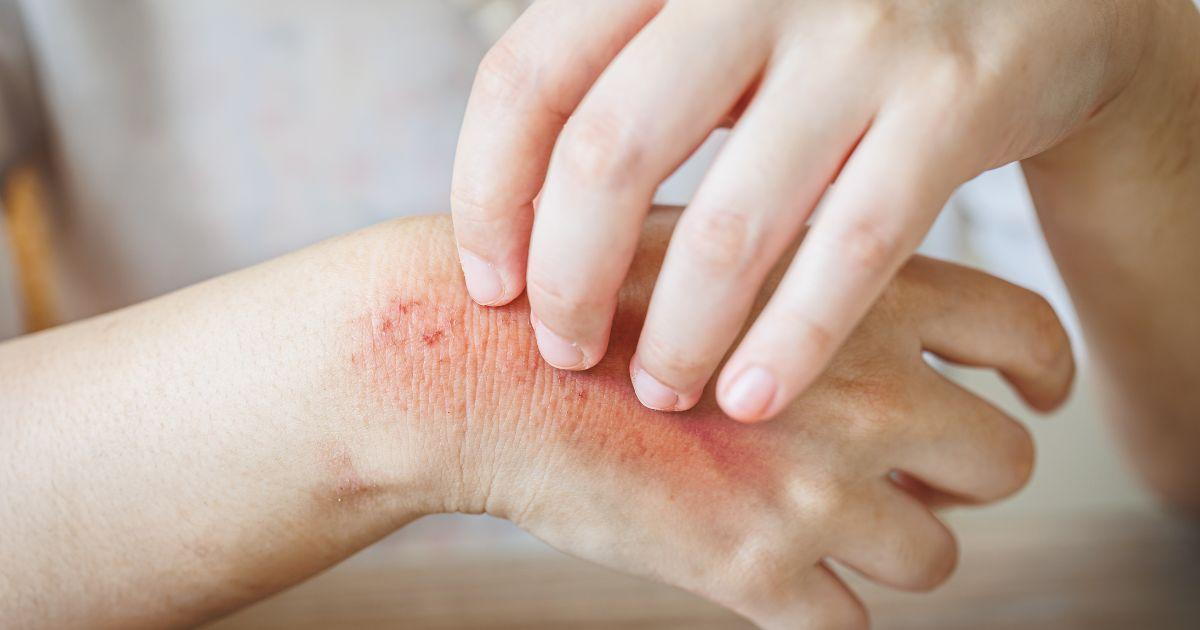How to Cure Fungal Infection on Skin Naturally at Home

- posted: Oct. 08, 2024
OMG, is that an itchy patch on your skin? Don't worry, we've all been there. Skin fungal infections are annoyingly common, but the good news is you can absolutely tackle them with natural remedies right from your home.
In this guide, we'll break down safe and effective methods to banish those pesky fungal skin infections for good. Here's what we'll cover:
Identifying common fungal infections: Know your enemy. We'll help you figure out exactly what you're dealing with.
Powerful natural remedies: Discover kitchen cupboard ingredients and essential oils that pack a punch against fungus.
Step-by-step treatment guide: Easy-to-follow instructions to apply these remedies like a pro.
Prevention tips: Keep those fungal skin rashes away for good with our expert advice.
And hey, if you're in the Fort Lauderdale area and want personalized advice, the folks at Natura Dermatology & Cosmetics are skin-whisperers. We offer a range of services, from acne treatments to cosmetic procedures.
Common Fungal Infections
Before we jump into the how, let's play detective and identify the what. Figuring out the type of fungal skin infection you have is key to choosing the right treatment. Here are some of the most fungal skin infections:
Athlete's Foot (Tinea Pedis)
This one loves damp places like sweaty socks and shower floors. You'll notice itching, burning, and maybe even some blisters between your toes. Gross, right? It can also spread to your toenails, making them thick and discolored.
Jock Itch (Tinea Cruris)
This itchy rash hangs out in warm and moist environments like your groin and inner thighs. It's more common in folks who sweat a lot or wear tight clothing. You might see a red, ring-shaped rash with a scaly border.
Ringworm (Tinea Corporis)
Despite the name, there's no worm involved. This fungal infection can pop up anywhere on your body, causing itchy, red, ring-shaped patches. It's highly contagious, so avoid sharing towels or clothing with others.
Yeast Infections (Candidiasis)
Caused by an overgrowth of Candida fungus, this fungal infection affects your skin, mouth, or even your nails (that's why known as nail fungus or fungal nail infections). Skin yeast infections often appear in warm, moist folds of skin, like under your breasts or in your groin. You might see red, itchy patches with small pustules.
If you're unsure about your skin condition, it's always best to get a professional opinion. Dr. Richardson and his team at Natura Dermatology & Cosmetics are experts in diagnosing and treating all sorts of skin conditions, including fungal infections. We can provide personalized advice and treatment options to get you back to feeling your best.
Powerful Natural Remedies to Try at Home

Forget expensive creams and pills. You'd be surprised what potent antifungal solutions are hiding in your pantry and fridge. These natural remedies have been used for centuries to combat fungal infections, and they're often just as effective as over-the-counter treatments.
Tea Tree Oil
This essential oil is a powerhouse when it comes to tackling fungal infections. It has strong antifungal properties that can help inhibit the growth of various fungi.
How to use it?
Dilute a few drops of tea tree oil with a carrier oil like coconut or olive oil.
Apply it to the affected area with a cotton ball or swab.
Repeat this a couple of times a day until the severe or persistent infections clears.
Word of caution: Tea tree oil can be a bit strong for some folks, so always do a patch test first to check for any irritation.
Apple Cider Vinegar
This kitchen staple isn't just for salad dressings. Apple cider vinegar's acidity creates an environment where fungus struggles to thrive.
How to use it?
Dilute apple cider vinegar with water (1:1 ratio).
Soak a cotton ball in the solution and apply it to the affected area.
You can also add a cup or two to your bathwater for a soothing soak.
Garlic
Garlic's pungent odor might keep vampires away, but it also has potent antifungal properties thanks to a compound called allicin.
How to use it?
Crush a few cloves of garlic and mix them with a carrier oil.
Apply the paste to the affected area for a short period (15-20 minutes).
Rinse thoroughly and moisturize afterward.
Important note: Garlic can be irritating to the skin, so use it cautiously and discontinue if you experience any burning or redness.
Yogurt
Yogurt contains live and active cultures (probiotics) that can help restore the balance of bacteria and yeast on your skin.
How to use it?
Apply plain, unsweetened yogurt directly to the affected area.
Leave it on for 30 minutes before rinsing off.
Repeat this a few times a day.
Coconut Oil
Coconut oil is a natural moisturizer with antifungal properties. It can help soothe the skin and reduce inflammation while fighting the fungal infection.
How to use it?
Apply a small amount of coconut oil to the affected area.
Gently massage it into the skin.
Repeat this several times a day.
Aloe Vera
Aloe vera is known for its soothing and anti-inflammatory properties. It can help calm irritated skin and promote healing.
How to use it?
Apply fresh aloe vera gel directly to the affected area.
Leave it on for 30 minutes before rinsing off.
Repeat this several times a day.
Turmeric
Turmeric contains curcumin, a compound with potent antifungal and anti-inflammatory properties.
How to use it?
Mix turmeric powder with a small amount of water or coconut oil to form a paste.
Apply the paste to the affected area.
Leave it on for 15-20 minutes before rinsing off.
These natural remedies can be incredibly effective, but it's important to be patient and consistent with your treatment.
If you're not seeing improvement or if your symptoms worsen, it's always a good idea to consult a dermatologist. At Natura Dermatology & Cosmetics, Dr. Richardson and his team can provide expert guidance and personalized treatment plans to address your specific needs. We can also recommend additional remedies or prescribe medication if necessary.
Your Step-by-Step Treatment Guide
Now that you know what you're dealing with, let's get down to business. Here's a simple guide to using those natural remedies effectively:
Clean and Dry: Start by thoroughly cleaning the affected area with mild soap and water. Pat it dry gently. Moisture is fungus's best friend, so keeping the area dry is crucial.
Apply Your Chosen Remedy: Choose one of the natural remedies we discussed earlier. Apply it to the affected area as directed, being careful not to overdo it. Less is often more, especially when starting out.
Consistency is Key: Apply the remedy consistently, usually 2-3 times a day. Don't give up if you don't see results immediately. It can take a few days or even weeks for the infection to clear completely.
Keep it Clean: Change your clothes and towels regularly, and avoid sharing them with others. This helps prevent the infection from spreading and re-infecting you.
Monitor and Adjust: Keep an eye on the infected area. If you notice any signs of irritation or if the infection isn't improving, stop using the remedy and try a different one.
Combine remedies for a one-two punch. For example, you could use tea tree oil in the morning, and apple cider vinegar soaks in the evening. Just be sure to test a small area first to ensure your skin doesn't react negatively to the combination.
Prevention Tips to Keep the Fungus Away

Here are some simple habits to keep your affected skin healthy and fungus-free:
Dry, Dry, Baby: Fungus loves dampness. After showering or sweating, dry yourself thoroughly, paying special attention to those sneaky areas like between your toes and skin folds.
Breathable is Best: Tight clothes and shoes trap moisture, creating a fungal paradise. Opt for loose-fitting clothing made from breathable fabrics like cotton. And let those feet breathe. Go barefoot at home whenever possible.
Hygiene Heroes: Wash your clothes and towels regularly, especially after sweating. And never (ever) share personal items like towels, combs, or nail clippers.
Public Enemy No. 1: Avoid walking barefoot in public areas like locker rooms, showers, and pool decks. The fungus can linger on those surfaces, just waiting for unsuspecting feet. Flip-flops are your friends.
Healthy Habits for Happy Skin: A strong immune system can help fight off fungal infections because a weakened immune system is always an easy target. Eat a balanced diet, get enough sleep, and manage stress to keep your body's defenses in top shape.
If you're prone to fungal infections, consider using an antifungal powder or spray preventively, especially in areas that tend to get damp.
FAQs
What is the fastest way to cure skin fungus?
While we all want a quick fix, there's no magic bullet for instantly zapping skin fungus. However, combining consistent treatment with natural remedies and good hygiene practices can significantly speed up the healing process.
Tea tree oil is known for its potent antifungal properties and can often bring relief faster than other remedies.
Over-the-counter antifungal creams can also be effective, but always follow the directions carefully.
If you're looking for faster results or have a severe infection, it's best to consult a dermatologist. They can prescribe stronger medications or recommend advanced therapies for quicker healing.
Are there drinks that cure skin fungus?
While no magical potion will instantly banish fungus, certain drinks can support your body's natural defenses and create an internal environment less hospitable to fungal overgrowth.
Water is crucial for overall health and helps flush out toxins.
Ginger tea has anti-inflammatory properties that can soothe irritated skin.
Probiotic-rich drinks like kefir or kombucha can help balance your gut flora, which indirectly supports skin health.
What is the strongest natural antifungal?
Many natural remedies boast antifungal properties, but tea tree oil often takes the crown as the most potent. Its effectiveness against a broad spectrum of fungi makes it a popular choice for treating various skin infections.
Garlic is another strong contender, thanks to its allicin content. However, it can be more irritating to the skin, so use it with caution.
Is hydrogen peroxide an antifungal?
Yes, hydrogen peroxide has some antifungal properties. Its oxidizing action can help kill fungal cells. However, it can also damage healthy skin cells, so it's important to use it carefully.
Dilute hydrogen peroxide with water before applying it to the affected area.
Avoid using it on broken or irritated skin.
What soap is good for skin fungus?
Choose a gentle, antifungal soap that contains ingredients like tea tree oil, ketoconazole, or selenium sulfide. These soaps can help cleanse the affected area and inhibit fungal growth.
Avoid harsh soaps with strong fragrances or dyes, as they can irritate the skin and worsen the infection.
What should you avoid if you have skin fungus?
To prevent further irritation and speed up healing, avoid:
Scratching: It can damage the skin and spread the infection.
Tight clothing: Opt for loose-fitting clothes made from breathable fabrics.
Sharing personal items: This includes towels, combs, and nail clippers.
Walking barefoot in public areas: Always wear shoes or flip-flops in locker rooms, showers, and pool areas.
Excessive moisture: Keep the affected area clean and dry.
What is the root cause of skin fungus?
Skin fungus thrives in warm, moist environments. Common causes include:
Weakened immune system: Makes you more susceptible to infections.
Poor hygiene: Not keeping the skin clean and dry.
Contact with infected surfaces: Like locker room floors or contaminated towels.
Certain medical conditions: Such as diabetes or HIV.
By understanding the causes and taking preventive measures, you can significantly reduce your risk of developing skin fungal infections.
Show That Fungus Who's Boss: Wrapping Up
You're now armed with the knowledge and tools to tackle those pesky fungal infections naturally. Remember, consistency and patience are key. With a little effort and the right remedies, you'll have that healthy, glowing skin back in no time.
Here's a quick recap of what we covered:
Common culprits: Athlete's foot, jock itch, ringworm, and yeast infections.
Nature's arsenal: Tea tree oil, apple cider vinegar, garlic, yogurt, coconut oil, aloe vera, and turmeric.
Treatment steps: Clean, apply, repeat, and monitor.
Prevention is power: Keep it dry, breathable, and clean.
Skin Still Giving You Trouble? Natura Dermatology Can Help
Sometimes, even with the best home remedies, those stubborn fungal infections just won't quit. Or maybe you're not sure what exactly is going on with your skin. That's where the experts come in.
If you're in the Fort Lauderdale area, Natura Dermatology & Cosmetics is your one-stop shop for all things skin. Dr. Richardson and his team can help you identify the root cause of your skin woes, recommend the most effective treatments, and provide personalized advice to keep your skin healthy and happy. So why not give them a call? You deserve to feel confident in your own skin.
Contact Us
Our Locations
Broward Location
800 E Broward Blvd, Ste 507
Fort Lauderdale, FL, USA
Hours of Operation
8:30 am - 12:00 pm
1:30 pm - 5:00 pm
8:30 am - 12:00 pm
1:30 pm - 5:00 pm
8:30 am - 12:00 pm
1:30 pm - 5:00 pm
8:30 am - 12:00 pm
1:30 pm - 5:00 pm
8:30 am - 12:00 pm
1:30 pm - 5:00 pm
Closed
Closed


